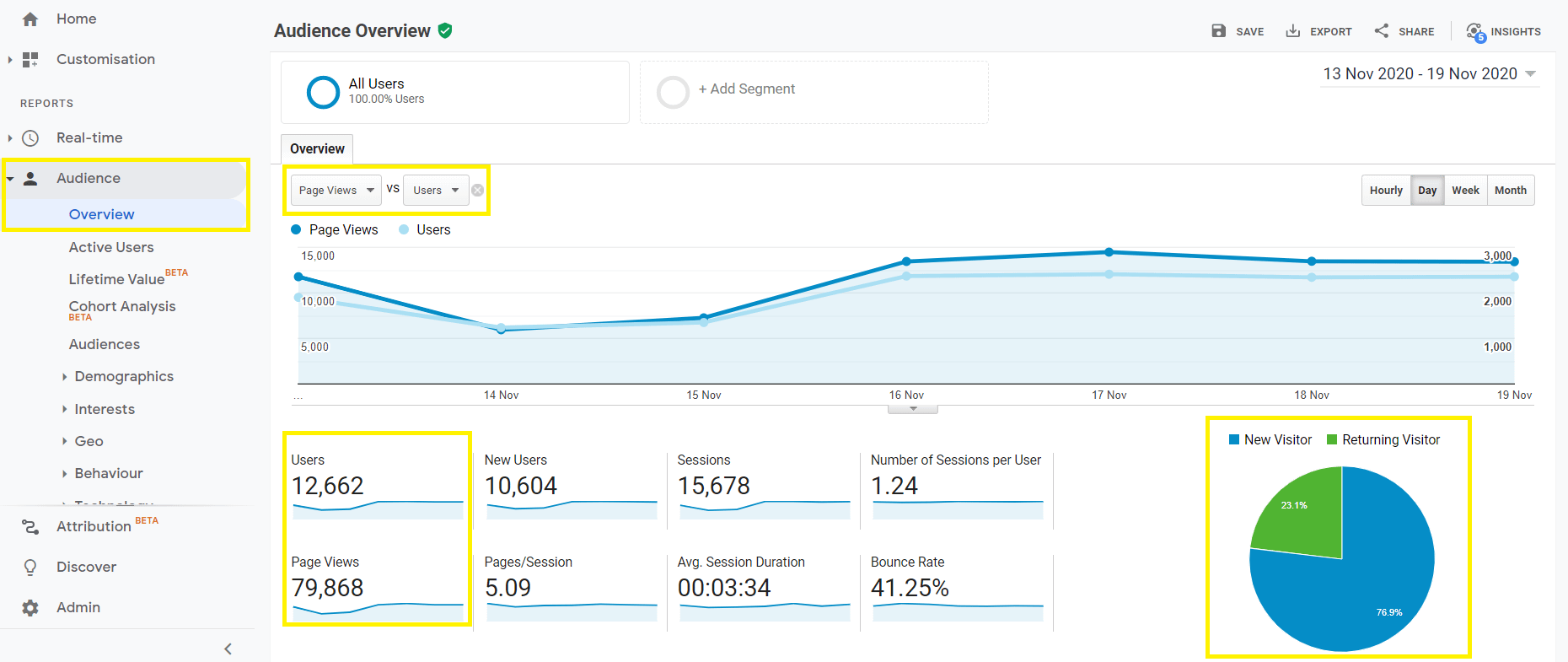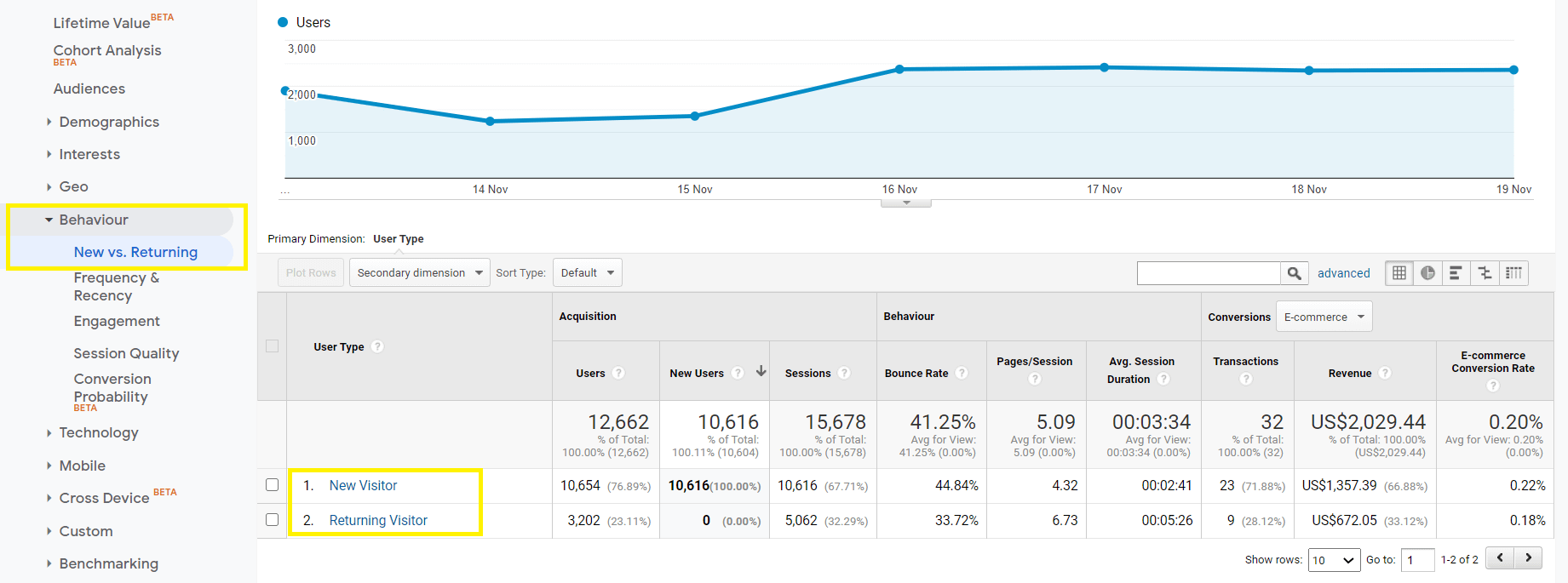How to Track a Webvisit to a Specific Link
Themeisle content is free. When you purchase through referral links on our site, we earn a commission. Learn More
Tools like Google Analytics are essential for any website owner. However, if you're new to tracking analytics, trying to interpret all the metrics on offer can seem overwhelming. For instance, the difference between page views vs visits can be hard to understand, as the terms sound very similar.
It's important to clear up this confusion and know what you're tracking, in order to make data-driven decisions. Fortunately, learning the distinctions between these two metrics isn't hard, and it may change how you perceive your website's success.
In this article, we'll explore page views vs visits and discuss whether they can impact your search engine optimization (SEO). We'll also show you where to find these numbers in Google Analytics. Let's go!
Understanding page views vs visits
A page view occurs whenever someone loads your site in their web browser. For instance, let's say that a visitor finds your blog post through a search engine. However, one of their browser extensions prevents some of the content from displaying correctly, so they have to reload the page. In that instance, your analytics report will register two page views, even though the same visitor generated them (and in a short period of time).
On the other hand, a page visit happens whenever someone reaches your site from an external source, outside of your website's domain. For instance, if a user finds your article online and then reloads the page, that still counts as one visit. However, if they navigate away from your website, search for a new keyword in Google, and then land on your page again, this will count as two visits.
To make sense of these metrics, it's also important to take a look at your site's 'sessions.' A session is the total time a user spends on your website within a certain period. During one session, your analytics tool will typically track all activities such as views and engagement with elements or forms.
A session typically expires after 30 minutes of inactivity (at least as Google Analytics defines "sessions). It's a useful metric to track, as it can give more context to your views and visits.
Why understanding page views vs visits matters for your website
The primary reason these two metrics matter is that they can make you aware of potential problems on your site. For instance, contrary to popular belief, high page views don't always mean you're reaching a broad audience.
For example, suppose that your page views are high while visits are low. That could indicate possible user experience (UX) issues on your website. Your visitors might find your navigation confusing, or be unable to locate the information they need, causing them to visit the same pages repeatedly.
On the other hand, some pages might experience high views due to the nature of the content. For instance, readers tend to refer to instructional materials multiple times, so your tutorials might show higher views than other kinds of pages.
In some cases, high page views are a desirable metric, especially if you monetize your site with pay-per-view (PPV) ads. However, it's generally best to strike a balance between page views and visits, in order to ensure that you're providing the best possible experience on your site.
On the other hand, high page visits are generally positive, as they indicate that your website is popular. However, if your visits are high while the views are low, it could mean that your audience is not staying around long enough to convert. If that's the case, it's worth reviewing your CTAs and value proposition, to make sure they're clear and engaging.
How page views and visits impact SEO
As isolated metrics, page views and visits are unlikely to be direct ranking factors. However, they might still influence your SEO to some degree. Search engines can use these numbers to calculate other significant tanking factors, such as the UX on your site.
For example, Google bots might interpret high page views as a sign that your website is popular. Organic traffic spikes can significantly boost your SEO, especially if referred from high-authority sites. However, the exact formula behind this calculation is unknown, so we can't be such just how influential these metrics are.
What we do know is that Google favors websites that are engaging and easy to navigate. A high page view to visits ratio generally indicates that users are spending a lot of time on your site, which is a positive ranking factor. However, if your high page views result from poor UX or irrelevant content, that could negatively impact your SEO.
How to measure page views and visits with Google Analytics
Google Analytics gives you a wealth of information about your website. Provided that you've inserted your tracking code correctly (or used a Google Analytics plugin), you can track all activities on your site, including page views and visits.
Note that Google Analytics uses slightly different terminology to describe visits. In general, it treats visits as 'sessions', and unique visitors as 'users'. The latter metric is also broken down into two categories: new and returning visitors. This can all be a little confusing at first, but it helps to remember that 'sessions' will always be equal to or higher than 'users' (as the same person can visit multiple times).
You can access these details via Audience > Overview:

Google Analytics also enables you to track new and returning visitors in more detail. When you navigate to Behavior > New vs. Returning, you can compare metrics such as the average session duration, bounce rate, and conversions:

Note that you can also track a metric called 'new users,' which is not the same as 'new visitors'. Google explains that it measures new user activity based on cookie usage, however, so these metrics will be very similar.
To learn more, check out our guide to the Google Analytics interface.
Conclusion
The concept of page views vs visits can seem confusing at first. However, once you understand the difference, it can help you identify potential issues on your website. For instance, high page views could indicate that your visitors can't find the information they need, so it's worth tracking it in conjunction with other data.
Let's quickly recap the distinction between these two metrics:
- A page view occurs whenever a browser loads your site. Therefore, one visitor can generate many page views.
- A visit occurs whenever someone arrives at your page from an external source, such as Google search results or another website.
To start tracking all of these metrics, you can add Google Analytics to your site or use another web analytics tool.
Do you have any questions about page views vs visits? Let us know in the comments section below!
Free guide
5 Essential Tips to Speed Up
Your WordPress Site
Reduce your loading time by even 50-80%
just by following simple tips.
Download free guide
How to Track a Webvisit to a Specific Link
Source: https://themeisle.com/blog/page-views-vs-visits/
0 Response to "How to Track a Webvisit to a Specific Link"
Publicar un comentario